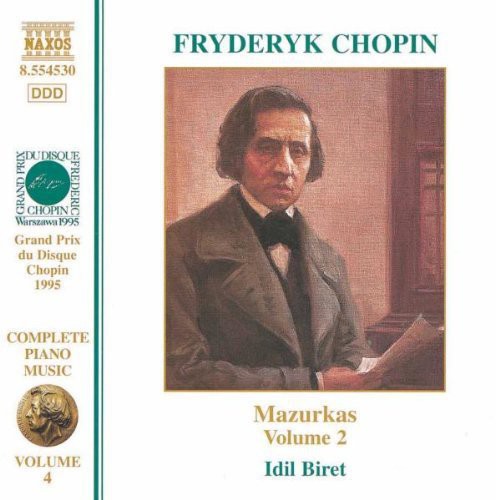Show results for
Deals
- 4K Ultra HD Sale
- Action Sale
- Alternative Rock Sale
- Anime sale
- Award Winners Sale
- Bear Family Sale
- Blu ray Sale
- Blues on Sale
- British Sale
- Classical Music Sale
- Comedy Music Sale
- Comedy Sale
- Country Sale
- Criterion Sale
- Cult Films sale
- Documentaries Sale
- Drama Sale
- Electronic Music sale
- Horror Sci fi Sale
- Kids and Family Sale
- Metal Sale
- Music Video Sale
- Musicals on Sale
- Mystery Sale
- Naxos Label Sale
- Page to Screen Sale
- Paramount Sale
- Rap and Hip Hop Sale
- Reggae Sale
- Rock
- Rock and Pop Sale
- Rock Legends
- Soul Music Sale
- TV Sale
- Vinyl on Sale
- War Films and Westerns on Sale

Mazurkas 2
- Format: CD
- Release Date: 9/28/1999

Mazurkas 2
- Format: CD
- Release Date: 9/28/1999
- Label: Naxos
- UPC: 636943453025
- Item #: NAX345302
- Genre: Classical
- Theme: Romantic Era
- Release Date: 9/28/1999

Product Notes
Since Chopin's mazurkas connect to an already established genre of music, some of the characteristics of that genre (the traditional Polish mazurka) remain the same in his interpretation of the genre. For example, both the traditional mazurka and Chopin's version contain a great deal of repetition. This can mean repetition of a single measure or small group of measures, repetition of a theme, or even repetition of an entire section. This repetition makes sense in the traditional dance for the repeat of a certain section of the actual dance; even though Chopin did not compose his mazurkas so they could be danced to, it is clear Chopin kept the original form in mind. Furthermore, many of the rhythmic patterns of the traditional mazurka also appear in Chopin's compositions so they still convey the idea of a dance, but a more "self-contained, stylized dance piece." In keeping with this idea, Chopin did try to make his mazurkas more technically interesting by furthering their chromaticism and harmony, along with using classical techniques, such as counterpoint and fugues. In fact, Chopin used more classical techniques in his mazurkas than in any of his other genres. One of these techniques is four part harmony in the manner of a chorale. The second mazurka of the set, in C-sharp minor, is faster than the previous one, with a more lively theme.

